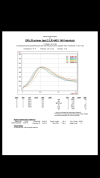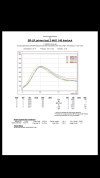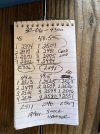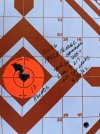Thats why fireformed brass most always provides better performance (accuracy).
-
If you are being asked to change your password, and unsure how to do it, follow these instructions. Click here
You are using an out of date browser. It may not display this or other websites correctly.
You should upgrade or use an alternative browser.
You should upgrade or use an alternative browser.
I need some help from the reloading gurus.
- Thread starter ShootnMathews
- Start date
 Help Support Long Range Hunting Forum
Help Support Long Range Hunting Forum
Take a look on YT. Tons of brass prep videos. Most of the videos are pretty good. Most of the heavy hitters have videos on there.
I don't
Don't what???I don't
- Joined
- Jan 26, 2015
- Messages
- 1,867
I believe he's referring to brass prep, or detailed brass prep.Don't what???
Darkker
Well-Known Member
Lighter cases accept more powder. Heavy cases accept less. The ratio of brass to to powder is small -- brass is denser by far, right at 20:1, but not inconsequential.
Crap, why is this concept such a challenge for some people..........
The 'concept' doesn't square with reality, is why.
Every company uses a slightly different alloy, so the weight can vary, regardless of volume. Some cases are balloon head, and some aren't; again that affects weight more than volume.
Pretending that any random case that's lighter holds more powder, is either nonsensical or ignorant of how production works.
Here's the actual traces from the pressure testing, so you don't have to scroll up again; here's the case weights
Lapua - 165.10gr
Norma - 154.78gr
Despite the case weights variation, the internal volume wasn't enough different to affect the burning curves in any meaningful way.
Identical? No.
Meaningfully different? Also no.
Cheers
Attachments
It was just a light hearted comment about me not having any videos on youtube.I believe he's referring to brass prep, or detailed brass prep.
As far as brass prep goes, the only thing I do is run virgin brass over a mandrel.
Totally agree with the "BULL" part!! This concept only makes sense to say the leastBull Bull and more Bull you know what.
Your chamber is pretty much fixed. The case capacity after a couple firings is the chamber capacity minus the case weight, OK? Its physics. The brass has expanded to whatever size the chamber is reamed at, plus headspace. ASSUMING you are not full length resizing every round.....
Lighter cases accept more powder. Heavy cases accept less. The ratio of brass to to powder is small -- brass is denser by far, right at 20:1, but not inconsequential.
Crap, why is this concept such a challenge for some people..........
Attachments
Last edited:
It's looking your are getting overwhelmed/frustrated with the replies that you are getting. All the differences of opinions are because everyone has "their" own particular opinions on what matter and what doesn't matter; and...of course their opinion is the correct one. And...some of this stuff is simply splitting hairs for some reloaders and not so much for others. My only suggestion is to sort through the replies and to apply them to your particular circumstances. I've learned quite a bit from your thread and I do appreciate your asking the question and for posting it.Exactly! I posted this because I've never had so much difference in a new box of brass and what I was using and I expected answers like "yeah that's common with my latest boxes of Lapua. Shoot it all and reload it and it'll be fine". OR something like that. Instead I've got a whole range of stuff with some seeming like I've claimed to have the best shooting rifle know to man because I used "1/4 moa load" as a rough description of how the federal load was averaging to shoot.. I did get a lot of helpful info as well though so it was worth it.
M1A1ABRAMS
Well-Known Member
water cooled rail gun ?Erik Cortina runs it right out of the box.
And I did start lower. I always do. They shot bad. I just didn't see the need to mention it.\
Last edited:
ShoNuffIt's makes you wonder when we shot in the 70s and 80s how did we ever hit anything without a chronograph and we thought neck sizing only was the ticket
All I'm saying is that you can do it without because we did it without
But I've never shot out a tube with a pill using a recipe however I've shot a lot of barrels out with bullets using a load that I developed without using a chronograph
New people to reloading may not have access to all the tools at first I know I didn't so you make do with what you got
Generally most of my reloading is done with Hornady brass because that is what is available and also that is what I can afford. I have an unopened box of Lapua 30-06 brass in the basement that I bought two or three years ago, plus I have some Hornady and some Winchester. I have been using the Hornady and Winchester brass, but....I'm saving that Lapua brass like it is my grandmother's best China dinnerware. As I wrote in a previous reply all the brass gets totally prepped right out of the box. I anneal the brass first before doing any other procedures. From there I full-length resize with the expander plug left out of the resizing die, leaving a .002 shoulder bump. After the full-length resizing I will use a mandrel die and mandrel size the neck. I've never used bushing dies because I believe that using a mandrel die and turning the necks will help to remove the donut after numerous reloads. I have read that reaming the donut out works too, I have just gone with the mandrel die instead. I've also found that annealing will help to keep the neck tension consistent with my neck tension. I have been annealing my cases every other reload, however after doing some research I will anneal after every firing of the brass. I have also found a variable in the cases that I do not read too much about and that is the burr that is left on the flash hole. After the cases have been trimmed to case overall length and deburred I will remove the burr from the flash hole. What I have found during this procedure is that sometimes there will be a lot of material removed from the flash hole and sometimes hardly any brass will come out of the case. This is just another variable that I address.I'll have to do more research on it. I haven't seen all his videos but I did see a video of his in the last couple weeks where he was talking about uniforming primer pockets and neck sizing and turning and weight sorting and he said that in his opinion most people do more damage than good and he said just buy Lapua and take it out of the box and use it. That's what I do.
Again I haven't followed him long or seen a tremendous amount of his stuff but I did hear him say that.
He also said to stop neck sizing and use a FL die and bump the shoulder .002" instead which happens to be what I've done for years. I played with neck sizing and FL sizing both and what seems to give me the best accuracy is exactly what he said. Set a FL to bump it back .002" from a fired case. Also you have to have a well annealed case for this to do well other wise it'll just spring back if the brass is too hard. Just what I've seen. I think he anneals after every firing if I'm not mistaken. I do every other firing. But I hunt. Not shoot for money
I'll add there's also no way to tell how genuine he meant that.
It was just a light hearted comment about me not having any videos on youtube.
As far as brass prep goes, the only thing I do is run virgin brass over a mandrel.New
I check the COAL to start with brand new brass. Bring all my case to length. I turn the necks for thickness. If you are using a reduced neck chambering to start with you can't get the case chamber. To me, it's better to corrected the neck to start with. That way you are not having to run a mandrel down the neck each time. You can set your neck tension with bushing and done. To me using a mandrel is working your brass one more time each to push the uneven portion of the neck to the outside of the neck.
There is a lot of work in case prep to start with, but after that it's mostly done. Your should fireformed after doing your case prep. You can use top quality brass and maybe not have to do as much to the case. I have worked over Win, Fed, Rem, PMC brass in days gone by. Some of those neck were 10th+ different between and side of the neck to the other. There a couple of steps that I left out, but included in my case prep to start with.,
greenejc
Well-Known Member
I've got an -06 that likes Remington and Winchester brass, but has accuracy issues with Norma or Hornaday brass. I have an -03A3 that likes pretty much anything and works well with Lake City. You might try Starline brass for your .308, though. Since I shoot a number of 30-06's, 300 winmags and two 35 Whelens, I mostly full length size my casings, and then use a lee factory crimp to insure even neck pressure, though. I also shoot mostly sporter weight barrels, ranging from light sporter to heavy sporter depending on the caliber, so I have not been chasing accuracy beyond around a 1" group, edge to edge, with 5 shots. For a .308 bullet, that's a center to center of about 0.7", and that's good enough for me. I can get that with several types of brass, using Sierra, Speer and Hornady bullets ranging from 168gr up to 200 grains in my 30-06's and my 300winmags so that's good enough. I use the same load in Winchester, Remington, Federal and Lake City brass, and get the same result. I've had to tweak the Hornaday brass to match the velocities of the other brass, though.I've seen a brass switch make zero difference, and I've seen it kill a load. My 7stw doesn't care between ww and rem brass with it's normal load but acted like hell froze over when I ran Bertram brass with it.




